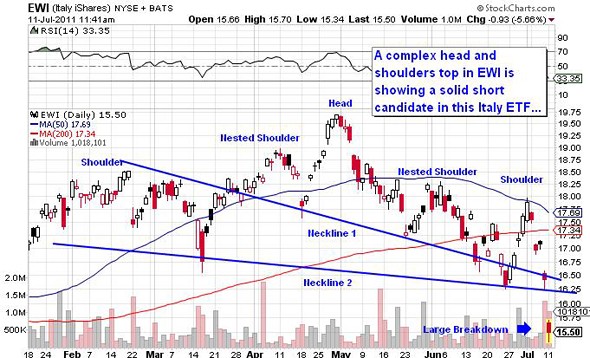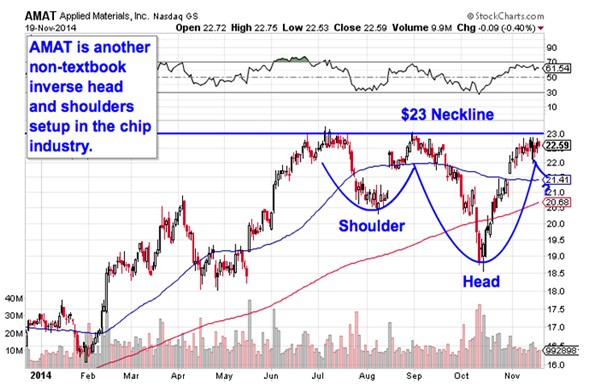4 Key Indicators for the Technical Trader s Toolbox Stockpickr! Your Source for Stock Ideas
Post on: 30 Март, 2015 No Comment

By Jonas Elmerraji
Senior Contributor
07/11/11 — 04:43 PM EDT
BALTIMORE (Stockpickr ) — If you’ve been following our series of technical analysis primers over the last few months, you’re probably becoming pretty well-acquainted with technical indicators by now. Maybe too well-acquainted.
With so many technical tools out there, it’s only natural to get overwhelmed — whether you’re new to trading or you’re an old hand.
At the end of the day, any technical toolbox is going to be heavily dependent on your chosen trading style, strategy and personal preference. Even so, you’ve got to start somewhere. It can be daunting to try to screen through literally hundreds of technical indicators and overlays to find elements that are relevant to you.
Today, we’ll put the pieces together with a set of four must-have indicators for new traders.
More From Stockpickr
Regardless of your strategy, these four metrics can help you gauge a stock’s technicals from day one. Here’s everything you need to know to get started.
When it comes to technical analysis, price is everything. It’s the cornerstone of the entire discipline — so it should come as no surprise that it tops this handful of indicators. Even if the idea of a stock’s share price seems simple, it isn’t necessarily so. Price data can reflect infinite time periods, and be displayed in a handful of popular charting styles. Picking the right one is everything.
For someone who’s primarily a fundamental investor, a line chart may be sufficient; for a technician, you’ll need some heavier firepower. One of the most popular charting tools is the candlestick chart, which displays five times as much data in the same space that a line chart consumes. (You can learn more about candlestick charts here .) The bar chart — also called an OHLC — does pretty much the same thing.
Even though these two chart types provide a lot more data, it’s far from overwhelming. Because of the way price action is presented (with each bar or candle representing a set time period), even novice investors can get a breadth of information in a single glance.
When creating your technical toolbox (in the trading platform or charting Web site of your choice), price action should be the focal point — particularly when you’re starting out with trading, you should be pulling all of your trading cues from price action itself, not from other indicators. The others are there to provide confirmation and context for your decisions.
If price action is the most important metric for market technicians, volume is right behind. Volume tells traders how many shares are trading hands; not surprisingly, high volumes at a given price or over a given time can have a very palpable impact on the market for a particular stock. But more often than not, new traders have a tough time interpreting what volume is telling them.
One of the most important messages new traders can glean from volume numbers is confirmation. High volume levels indicate high levels of participation from traders, so in simple terms, increasing volume confirms a trend while decreasing volume does the opposite. As an example, rising volume on an uptrend is bullish, while rising volume as stocks crash means that sellers are in control of the market.
Because volume trends can be difficult to spot (volume can be erratic in many issues), I’d recommend applying a moving average to your volume subchart to help identify whether or not volume is confirming your trade. The moving average will smooth out volume data over a set time period to make trends in volume appear more clearly.
(There’s a lot more to volume analysis than most traders realize. Buff Dormeier’s new book, Investing with Volume Analysis. is the must-read research for going further.)
Momentum indicators may be the most popular type of indicator out there — even if many would-be traders use them wrong.
Momentum a measure of a stock’s acceleration — a way to describe its change over time. While momentum can tell you whether a stock is becoming overextended in one direction or another, it’s not a reliable contrarian indicator unless certain conditions are met. (More on those conditions can be found here .) Instead of looking at momentum to spot potential reversals, use momentum indicators to spot conspicuous divergences between momentum and price.
While price can tell you a lot about a stock’s trajectory, momentum can be one of the first indicators that an uptrend is about to lose steam. A decelerating momentum reading in an uptrend is often a more predictable sign of a reversal than an overbought reading.
So which momentum indicator should you use? Frankly, I’d suggest a bit of trial and error to pick a momentum measure of your choice. Any classical momentum tool — such as RSI or Stochastics — is going to send a similar signal under regular market conditions. When you’re starting off, worry more about the parameters (like time period) you plug in.
4. Market Breadth Measures

The last indicator I’m recommending for trading newbies is a metric that actually has nothing to do with the stock you’re looking at. Instead, it’s a measure of the strength of the market as a whole.
Remember, you can’t trade in a vacuum — and market breadth indicators can provide some invaluable market context. One of the most useful (and easy to interpret) is the advance/decline line (or A/D line), which keeps a running total of the net advancing stocks in a given index or exchange. The logic is simple: a greater proportion of advancing stocks means a stronger market (and vice versa).
The A/D line isn’t something you’ll need to look at every day, but it is worth monitoring periodically to see whether issues you’re spotting in your focus stocks are endemic to the market, or a signal that it’s time to look elsewhere for trading opportunities. When the trading environment gets tough, the A/D line becomes extremely useful to spot improving conditions.
Even if you’re a paper trader, putting these four technical indicators together can provide an easily interpreted view of a stock’s trading potential. Over time, I strongly suggest modifying the indicators you rely on to suit your strategy — until then, you’ll be ahead of the curve. Next time, we’ll add to your technical repertoire with another primer that will bring you closer to implementing technical analysis for your portfolio.
In the meantime, do you have a burning technical analysis question? Get it answered by heading to Stockpickr Answers .
— Written by Jonas Elmerraji in Baltimore.
RELATED LINKS:
>>5 Stocks Poised for Breakouts
>>5 Must-See Stocks to Trade for Gains
>>Heavily Shorted Stocks That Could Explode in 2011
Jonas Elmerraji, based out of Baltimore, is the editor and portfolio manager of the Rhino Stock Report, a free investment advisory that returned 15% in 2008. He is a contributor to numerous financial outlets, including Forbes and Investopedia, and has been featured in Investor’s Business Daily, in Consumer’s Digest and on MSNBC.com.














